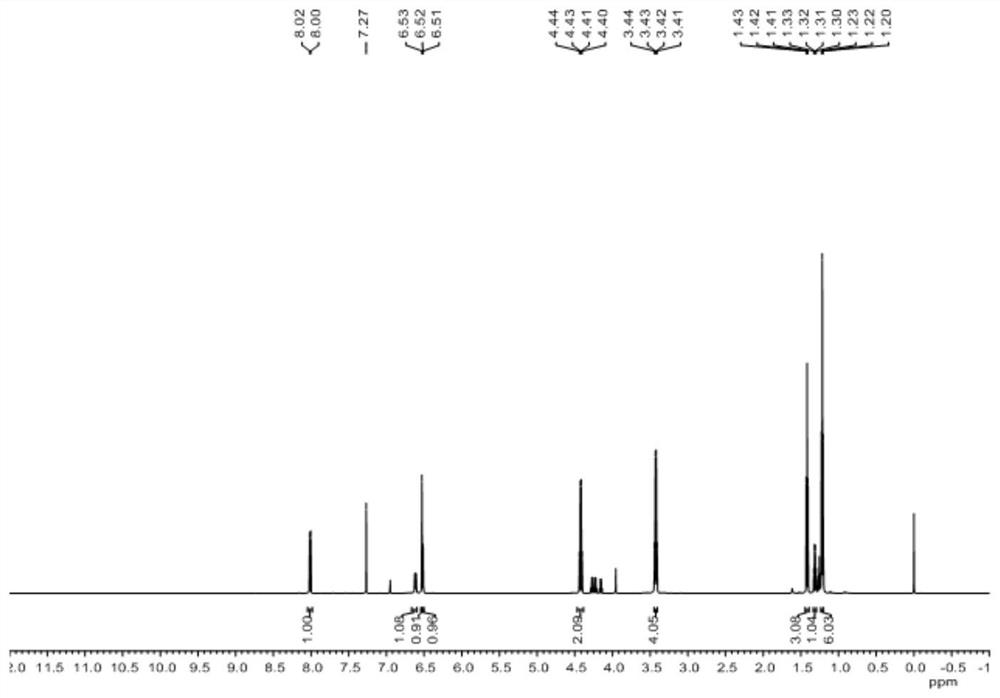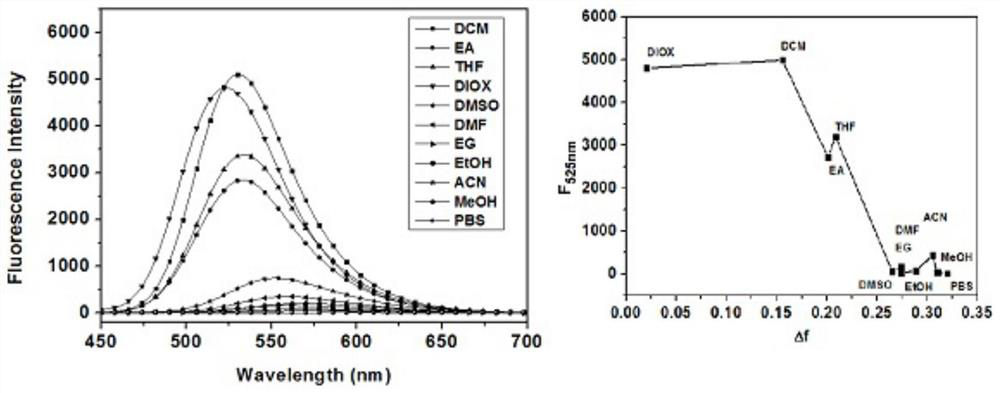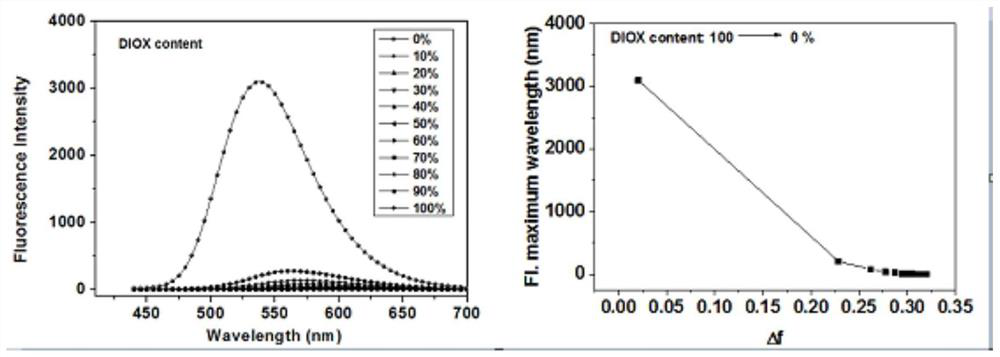A fluorescent probe for the specific detection of lipid droplets for distinguishing between normal cells and cancer cells and its application
A technology for fluorescent probes and normal cells, applied in the field of fluorescent probes, to achieve the effect of fast staining speed and low cytotoxicity
- Summary
- Abstract
- Description
- Claims
- Application Information
AI Technical Summary
Problems solved by technology
Method used
Image
Examples
Embodiment 1
[0045] The structural formula of probe a is as follows:
[0046]
[0047] Probe a was prepared as follows: a mixture of diethyl oxaloxalate (1.818 g, 10 mM) and 3-(dimethylamino)phenol (1.3718 g, 10 mM) was stirred at 120° C. for 3 hours. After cooling, the reaction mixture was washed with CH 2 Cl 2 diluted and purified by silica gel column chromatography (CH 2 Cl 2 ), an orange solid (1.07 g, 45% yield) was obtained.
[0048]
Embodiment 2
[0050] The structural formula of probe b is as follows:
[0051]
[0052] Probe b was prepared as follows: a mixture of diethyl oxalate (1.818 g, 10 mM) and 3-(diethylamino)phenol (1.3718 g, 10 mM) was stirred at 120° C. for 3 hours. After cooling, the reaction mixture was washed with CH 2 Cl 2 diluted and purified by silica gel column chromatography (CH 2 Cl 2 ), an orange solid (1.07 g, 45% yield) was obtained.
[0053]
[0054] The application of the probe a prepared in embodiment 1:
[0055] 1. Changes in fluorescence intensity of probe a interacting with solvents of different polarities
[0056] Prepare a PBS (10mM) buffer solution with pH=7.4; weigh the probe, dissolve it in DMSO, and accurately prepare a 2mM probe storage solution; add 2mL of 1,4-dioxane and dichloro After methane, ethyl acetate, tetrahydrofuran, dimethyl sulfoxide, N,N-dimethylformamide, ethylene glycol, ethanol, acetonitrile, methanol and PBS buffer solution, add 4 μL of probe stock soluti...
PUM
| Property | Measurement | Unit |
|---|---|---|
| wavelength | aaaaa | aaaaa |
Abstract
Description
Claims
Application Information
 Login to View More
Login to View More - R&D
- Intellectual Property
- Life Sciences
- Materials
- Tech Scout
- Unparalleled Data Quality
- Higher Quality Content
- 60% Fewer Hallucinations
Browse by: Latest US Patents, China's latest patents, Technical Efficacy Thesaurus, Application Domain, Technology Topic, Popular Technical Reports.
© 2025 PatSnap. All rights reserved.Legal|Privacy policy|Modern Slavery Act Transparency Statement|Sitemap|About US| Contact US: help@patsnap.com



